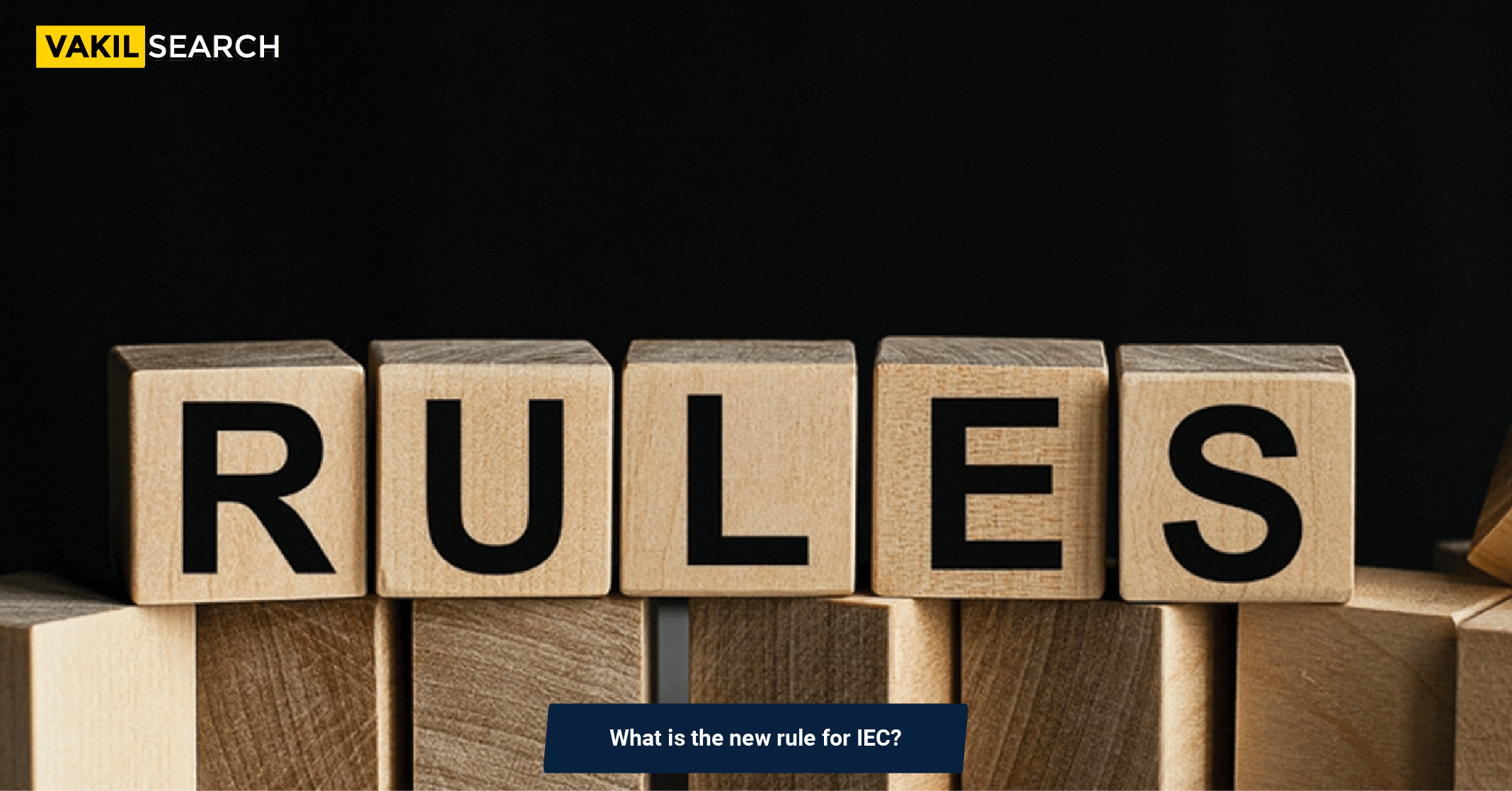Discover the latest changes in Import Export Code (IEC) rules. Learn the updates and seek expert guidance for smooth compliance.
Introduction
The Import Export Code (IEC) is a unique 10-digit code issued by the Director General of Foreign Trade (DGFT), under the Ministry of Commerce, Government of India. It is a mandatory requirement for businesses or individuals engaged in import/export activities. The IEC is a key document that facilitates international trade transactions and ensures seamless cross-border movement of goods and services. In recent times, there have been significant updates and changes in the rules governing the issuance and renewal of IEC. These changes aim to streamline the process, enhance compliance, and promote ease of doing business. In this article, we will delve into the latest updates and rule for IEC, ensuring you stay informed and compliant with the latest requirements.
Understanding the Basics of Import Export Code (IEC)
Before we delve into the recent updates, let’s grasp the fundamental aspects of IEC.
What is IEC?
Import Export Code (IEC) is a unique code required by individuals or entities involved in international trade to carry out import/export activities. It is a 10-digit alphanumeric code issued by the DGFT and is mandatory for both importers and exporters.
Significance of IEC
IEC is essential for customs clearance. It is used by customs authorities to identify the exporter or importer, and it is required when sending money abroad or receiving money in foreign currency into a bank account.
Who Needs an IEC?
Any person or entity engaged in international trade of goods and services needs an IEC. This includes individuals, firms, companies, LLPs, trusts, and others.
Recent Updates – Rule for IEC and Procedures
Let’s explore the recent updates and modifications in the rules governing IEC issuance, renewal, and related procedures.
Online Application Process
In line with the government’s digital initiative, the application process for IEC has been made entirely online. Applicants can now submit their applications, pay fees, and track the status of their application through the DGFT’s online portal. This move enhances accessibility and expedites the entire process.
Aadhaar Authentication
To simplify the application process and enhance authentication, applicants can now undergo Aadhaar authentication. This feature streamlines the verification process, making it faster and more secure.
Simplified Documentation
The documentation process for IEC has been significantly simplified. The number of documents required and the complexity of the submission process have been reduced, making it easier for individuals and businesses to obtain or renew their IEC.
Digital Signatures for Verification
Digital signatures are now being used extensively for verification purposes. This ensures the authenticity of documents and reduces the reliance on physical paperwork.
Unified Application for PAN and IEC
A unified application process has been introduced for PAN (Permanent Account Number) and IEC. This integration simplifies the application process and reduces duplication of efforts, especially for new applicants.
Validity Period
The validity period for IEC has been extended. Previously, IEC was issued with a lifetime validity. However, the new rules stipulate that IEC is now valid for five years from the date of issue. This aligns with the government’s efforts to maintain updated records and enhance compliance.
Procedure for Obtaining or Renewing IEC – Rule for IEC
Let’s outline the step-by-step procedure for obtaining or renewing an IEC.
Step 1: Online Application
Initiate the process by filing an online application on the DGFT portal. Fill in the required details accurately and complete the application form.
Step 2: Document Submission
Submit the necessary documents, including identity and address proof, bank details, and any other documents required as per the latest guidelines.
Step 3: Aadhaar Authentication
Undergo Aadhaar authentication to streamline the verification process.
Step 4: Payment of Fees
Pay the applicable fees for IEC issuance or renewal through the online portal.
Step 5: Verification and Approval
The concerned authorities will review your application, verify the documents, and conduct the necessary checks.
Step 6: IEC Issuance/Renewal
Upon successful verification, the IEC will be issued or renewed, and you will receive the 10-digit code via email.
Conclusion
Staying updated with the latest rules and procedures is crucial for any individual or entity engaged in international trade. The recent updates in the rules governing Import Export Code (IEC) issuance and renewal aim to enhance ease of doing business, promote digitalisation, and ensure better compliance.
Adapting to the digital application process, utilising Aadhaar authentication, and understanding the revised validity period are essential steps for businesses and individuals to smoothly obtain or renew their IEC. Seeking assistance from Vakilsearch to navigate through these processes seamlessly further adds value. By following the outlined procedure and adhering to the updated rules with expert guidance, businesses can continue their international trade operations seamlessly while remaining compliant with the regulatory framework. Vakilsearch, with its expertise in legal matters and business compliance, plays a pivotal role in assisting businesses through these procedures, making the process efficient and hassle-free.




